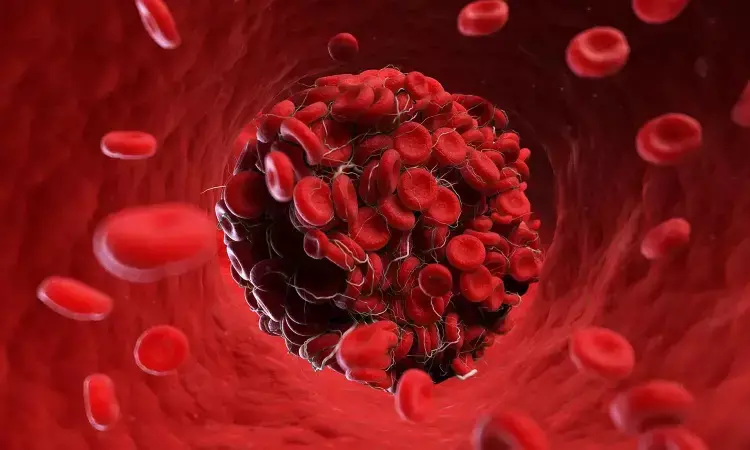- Home
- Medical news & Guidelines
- Anesthesiology
- Cardiology and CTVS
- Critical Care
- Dentistry
- Dermatology
- Diabetes and Endocrinology
- ENT
- Gastroenterology
- Medicine
- Nephrology
- Neurology
- Obstretics-Gynaecology
- Oncology
- Ophthalmology
- Orthopaedics
- Pediatrics-Neonatology
- Psychiatry
- Pulmonology
- Radiology
- Surgery
- Urology
- Laboratory Medicine
- Diet
- Nursing
- Paramedical
- Physiotherapy
- Health news
- Fact Check
- Bone Health Fact Check
- Brain Health Fact Check
- Cancer Related Fact Check
- Child Care Fact Check
- Dental and oral health fact check
- Diabetes and metabolic health fact check
- Diet and Nutrition Fact Check
- Eye and ENT Care Fact Check
- Fitness fact check
- Gut health fact check
- Heart health fact check
- Kidney health fact check
- Medical education fact check
- Men's health fact check
- Respiratory fact check
- Skin and hair care fact check
- Vaccine and Immunization fact check
- Women's health fact check
- AYUSH
- State News
- Andaman and Nicobar Islands
- Andhra Pradesh
- Arunachal Pradesh
- Assam
- Bihar
- Chandigarh
- Chattisgarh
- Dadra and Nagar Haveli
- Daman and Diu
- Delhi
- Goa
- Gujarat
- Haryana
- Himachal Pradesh
- Jammu & Kashmir
- Jharkhand
- Karnataka
- Kerala
- Ladakh
- Lakshadweep
- Madhya Pradesh
- Maharashtra
- Manipur
- Meghalaya
- Mizoram
- Nagaland
- Odisha
- Puducherry
- Punjab
- Rajasthan
- Sikkim
- Tamil Nadu
- Telangana
- Tripura
- Uttar Pradesh
- Uttrakhand
- West Bengal
- Medical Education
- Industry
Enhanced Postpartum Enoxaparin Protocol Reduces Wound Hematomas with Unchanged Thromboembolic Risk: JAMA

USA: In the realm of obstetric care, the management of thromboprophylaxis remains a critical area of focus to mitigate the risk of venous thromboembolism (VTE) among pregnant women. Recent studies have underscored the importance of tailored protocols that balance efficacy with safety. This prompted a comparative analysis between a more selective approach and a standard risk-stratified protocol using heparin-based treatments.
The retrospective observational study published in JAMA revealed decreased rates of wound hematomas without evidence of increased rates of postpartum thromboembolic events with a more selective protocol for postpartum enoxaparin.
"A more selective protocol for chemoprophylaxis resulted in a decrease in heparin (enoxaparin) administration (16% versus 8%)," the researchers reported.
"The selective protocol for postpartum enoxaparin was linked with a wound hematoma reduction (0.7% versus 0.3% in the selective protocol group; adjusted odds ratio, 0.38) without evidence of an increase in venous thromboembolism (VTE; 0.1% versus 0.1% in the selective protocol group; adjusted odds ratio, 0.40)."
In 2016, an institute adopted a pregnancy-related VTE prophylaxis based on American College of Obstetricians and Gynecologists guidelines recommending postpartum heparin-based chemoprophylaxis (enoxaparin) based on a risk-stratified algorithm. Using this protocol, a more selective risk-stratified approach was adopted in 2021 in response to increased wound hematomas without significant reduction in VTE.
Against the above background, Macie L. Champion, Center for Women’s Reproductive Health at the University of Alabama at Birmingham, and colleagues aimed to evaluate outcomes of the more selective risk-stratified approach to heparin-based obstetric thromboprophylaxis (enoxaparin) protocol.
For this purpose, the researchers included 17,489 patients who delivered at a single tertiary care center in the southeast US between 2016 and 2018 (original protocol) and between 2021 and 2023 (more selective protocol). It excluded patients receiving outpatient anticoagulation for active VTE or high VTE risk during pregnancy.
The study's main focus was on identifying wound hematomas diagnosed clinically within six weeks after childbirth. Additionally, it aimed to detect new cases of venous thromboembolism during the same postpartum period. The analysis included comparing baseline characteristics and outcomes across different groups, and adjusted odds ratios were calculated for both primary and secondary outcomes, using the original protocol group as the reference point.
The following were the key findings of the study:
- Of 17 489 patients included in the analysis, 12 430 were in the original protocol group, and 5029 were in the more selective group.
- Rates of chemoprophylaxis decreased from 16% (original protocol) to 8% (more selective protocol).
- Patients in the more selective group were more likely to be older, be married, and have obesity or other comorbidities (hypertension, diabetes, cardiac disease).
- Compared with the original protocol, the more selective protocol was associated with a decrease in any wound hematoma (0.7% vs 0.3%; adjusted odds ratio [aOR], 0.38), particularly due to a lower rate of superficial wound hematomas (0.6% vs 0.3%; aOR, 0.43).
- There was no significant increase in VTE or individual types of VTE (0.1% vs 0.1%; aOR, 0.40).
"The findings showed that a more selective risk-stratified approach to an enoxaparin thromboprophylaxis protocol for venous thromboembolism was associated with reduced rates of wound hematomas without increased postpartum VTE rates," the researchers concluded.
Reference:
Champion ML, Blanchard CT, Lu MY, et al. A More Selective vs a Standard Risk-Stratified, Heparin-Based, Obstetric Thromboprophylaxis Protocol. JAMA. Published online June 27, 2024. doi:10.1001/jama.2024.8684
Dr Kamal Kant Kohli-MBBS, DTCD- a chest specialist with more than 30 years of practice and a flair for writing clinical articles, Dr Kamal Kant Kohli joined Medical Dialogues as a Chief Editor of Medical News. Besides writing articles, as an editor, he proofreads and verifies all the medical content published on Medical Dialogues including those coming from journals, studies,medical conferences,guidelines etc. Email: drkohli@medicaldialogues.in. Contact no. 011-43720751


